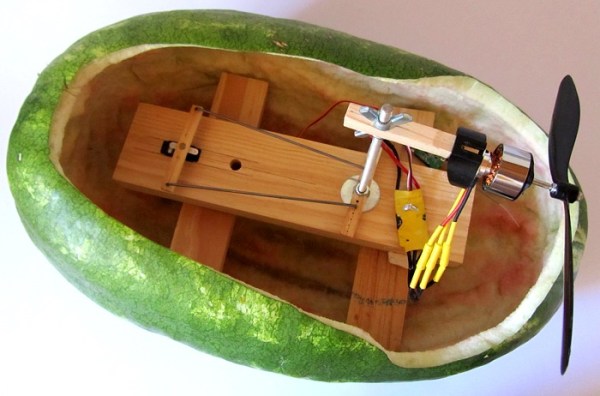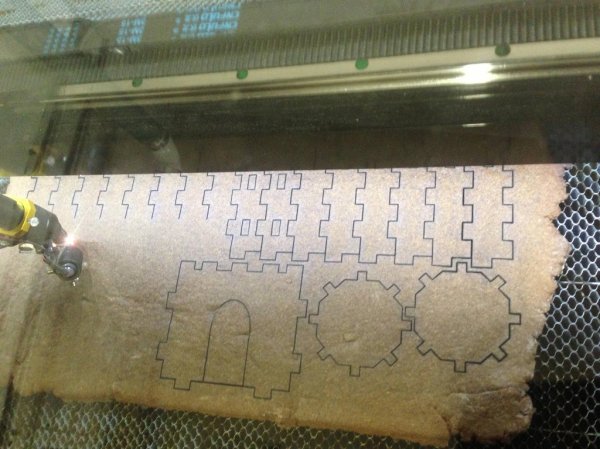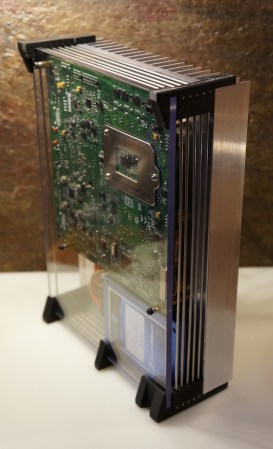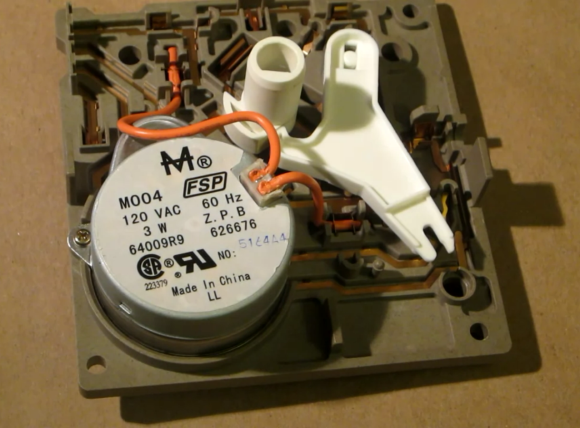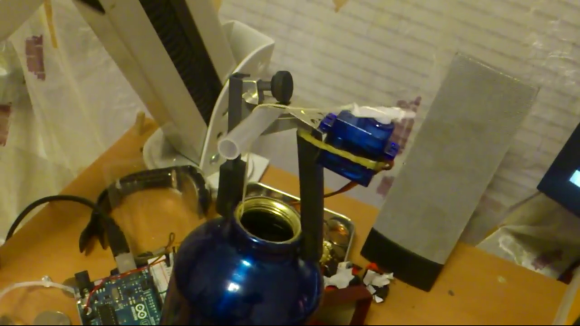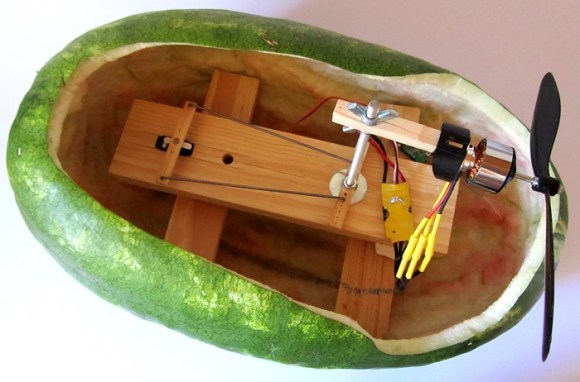
We think you’ll turn a few heads in Central Park if you’re driving a water melon around when everyone else is piloting sailboats. This watermelon is both sea worthy and radio controlled thanks to the work which [Starting Electronics] put into it.
We used this image because it shows you what’s inside of the hull, but you don’t want to miss the thing motoring around an above-ground swimming pool in the clip after the break. The hollowed out shell is quite buoyant and has no problem staying afloat and upright with the addition of a propeller. The parts from a remote control airplane kit have been mounted on a wooden scaffold. This provides plenty of thrust with a servo motor moving turning the prop for directional control. There is no dagger board so the craft is a bit slow to respond to turns. But how responsive do you expect a floating melon to be?

